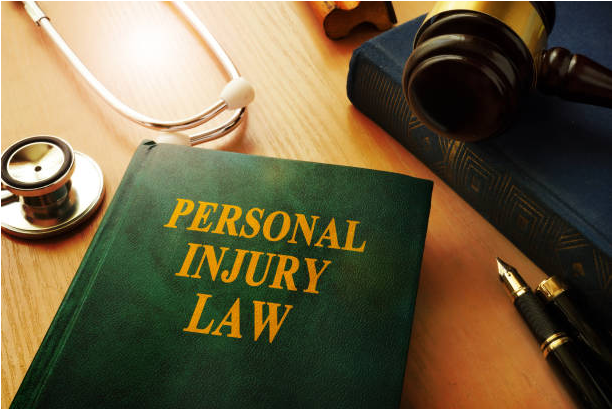Medical devices have revolutionized healthcare, offering minimally invasive procedures, improved treatment outcomes, and a better quality of life for millions. When medical devices meant to improve health fail, the results can be heartbreaking. If you’ve been harmed by a defective medical device, you may be considering legal action against the manufacturer.
In this article, we provide a comprehensive guide, navigating you through the complexities of pursuing compensation for your pain and suffering.
Understanding Medical Device Failures
Medical device failures encompass various types of flaws. Design defects arise during conception, compromising safety and effectiveness. Manufacturing defects, such as material inconsistencies or assembly errors, occur during production, leading to malfunctioning devices. Inadequate labeling or instructions contribute to misuse, resulting in preventable adverse events.
User-related failures stem from improper handling or interactions in clinical settings, further highlighting the complexity and consequences of medical device failures.
According to the International Consortium of Investigative Journalists, the Implant Files analysis uncovered alarming statistics regarding medical device-related incidents in the US. Over a decade, the analysis identified more than 1.7 million injuries and nearly 83,000 deaths suspected of being linked to medical devices.
These findings underscore the urgent need for heightened scrutiny and accountability within the medical device industry.
Gathering Evidence: Documenting Harm and Establishing Causation
Gathering compelling evidence is essential for legal action against medical device manufacturers. Documenting the device’s harm and establishing a direct connection to resulting injuries are pivotal for building a robust case. These steps are fundamental in securing justice and holding manufacturers accountable for their products’ adverse effects.
Patients must diligently maintain comprehensive medical records, documenting diagnosis, treatments, and any device-related adverse reactions or complications. Also, visual evidence, such as photos, videos, and eyewitness accounts, enhances the case by confirming the extent of harm suffered. This meticulous documentation serves as vital evidence in legal proceedings against medical device manufacturers.
A National Institute of Health study uncovered the considerable financial burden of medical errors, including those associated with medical device failures. Experts estimate that adverse events cost the healthcare system approximately $20 billion annually, underscoring the substantial economic impact of these incidents.
Thorough documentation is essential for gathering evidence, substantiating claims, and demonstrating the broader impact of medical device failures.
Identifying Legal Claims
Product liability law provides a framework for holding manufacturers accountable for placing defective medical devices on the market. Your attorney may pursue various legal claims based on the specifics of your case. Strict liability holds manufacturers accountable for defective products, regardless of intent.
Negligence requires proving the manufacturer’s failure to exercise reasonable care, leading to harm. Breach of warranty claims arises when a device fails to meet safety or performance warranties, resulting in injury. These legal avenues offer recourse for victims of medical device failures.
One notable case that exemplifies the importance of identifying legal claims is the Bard Power Port implant. A Texas breast cancer patient is suing Bard PowerPort’s manufacturer after the device fractured and lodged in her heart, reported by Drugwatch. Brandie Songy, implanted with the device in August 2022, experienced device failure within a year, requiring emergency surgery.
The complaint alleges that the company knew the risks associated with the device and sought damages exceeding $75,000.
Thousands of patients like Brandie Songy have filed lawsuits against C.R. Bard. They claim design defects in the Bard PowerPort catheter result in severe complications such as infections and catheter fractures. Allegations in the Bard Power Port lawsuit suggest these defects pose significant risks to patient safety during medication administration.
TorHoerman Law highlights that the Bard PowerPort lawsuit has been consolidated within the Bard Implanted Port Catheter Products Liability Litigation (MDL 3081). Recent filings with the JPML indicate that 189 Bard PowerPort Lawsuits are currently pending in multidistrict litigation. Notably, more than seventy additional cases were added to the litigation in April alone.
Finding Legal Representation
In pursuing legal action against medical device manufacturers for failures causing harm, securing appropriate legal representation is crucial. Expert attorneys specializing in product liability and medical malpractice offer indispensable guidance and advocacy, ensuring a thorough and effective legal process.
When seeking legal representation for medical device litigation, start by looking for referrals from healthcare providers or patient advocacy groups. Research potential attorneys with a successful track record in this field, reviewing their past case results and experience. Schedule consultations with multiple lawyers, assessing their approach, communication, and fees to find the best fit for your case.
Filing a Lawsuit
Lawyer Monthly reported that only 7% of medical malpractice cases go to trial, with 93% resolved through other means. This underscores the importance of thoroughly researching a lawyer’s background before making a selection, as most cases are resolved outside of the courtroom.
Understanding a lawyer’s track record and approach can significantly impact the outcome of your case.
In filing a lawsuit against medical device manufacturers, key steps include drafting the complaint outlining factual allegations, legal theories, and the relief sought. After preparation, the complaint is filed with the court, initiating legal proceedings. The defendant is then served with the complaint and summons, initiating their formal response. Following this, both parties undergo the discovery process, exchanging crucial information and evidence to bolster their respective cases.
FAQs
What do you do if you are harmed by a defective medical device?
Seek medical attention immediately and document all related information when injured by a medical device. Contact a specialized attorney experienced in medical device litigation to explore your legal options and pursue compensation for your injuries.
How can I know if I have a valid legal claim against a medical device manufacturer?
To determine the validity of a legal claim against a medical device manufacturer, consult with experienced attorneys specializing in product liability. They can evaluate your case, considering factors such as evidence of device defects, resulting injuries, and the manufacturer’s liability.
What evidence is necessary to support a legal claim for medical device failure?
Evidence for a medical device failure claim includes medical records detailing diagnoses, treatments, and complications, along with visual evidence like photographs. Eyewitness testimonies and expert opinions further strengthen the case.
Pursuing Justice for Medical Device Failures
In the pursuit of justice for medical device failures, patients face numerous challenges, from navigating legal complexities to confronting powerful manufacturers. However, with knowledge, perseverance, and skilled legal representation, individuals can take legal action and hold manufacturers accountable for defective devices’ harm.
Patients advocating for their rights and accountability foster a healthcare system prioritizing patient safety and justice. Sharing experiences, advocating for change, and holding manufacturers accountable can prevent future tragedies and safeguard global patient well-being.












